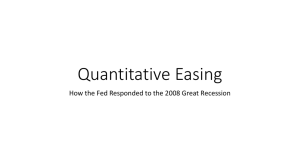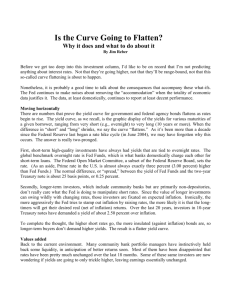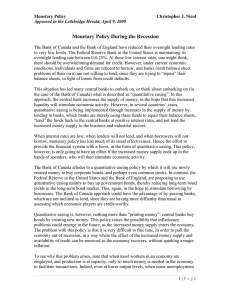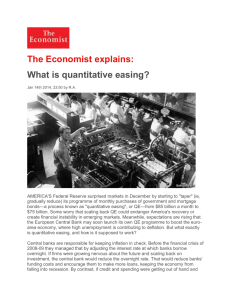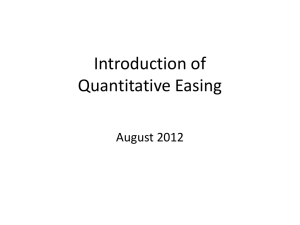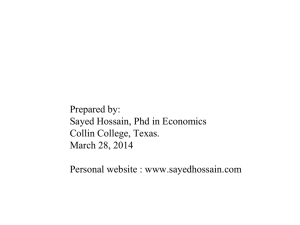Explaining Quantitative Easing
advertisement
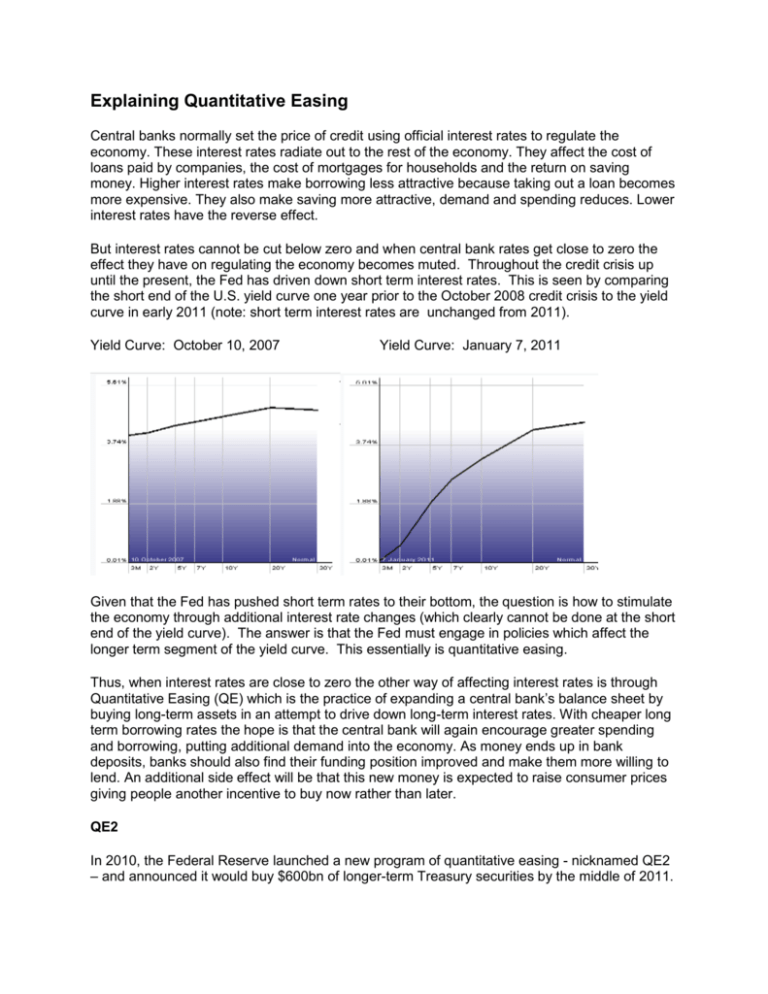
Explaining Quantitative Easing Central banks normally set the price of credit using official interest rates to regulate the economy. These interest rates radiate out to the rest of the economy. They affect the cost of loans paid by companies, the cost of mortgages for households and the return on saving money. Higher interest rates make borrowing less attractive because taking out a loan becomes more expensive. They also make saving more attractive, demand and spending reduces. Lower interest rates have the reverse effect. But interest rates cannot be cut below zero and when central bank rates get close to zero the effect they have on regulating the economy becomes muted. Throughout the credit crisis up until the present, the Fed has driven down short term interest rates. This is seen by comparing the short end of the U.S. yield curve one year prior to the October 2008 credit crisis to the yield curve in early 2011 (note: short term interest rates are unchanged from 2011). Yield Curve: October 10, 2007 Yield Curve: January 7, 2011 Given that the Fed has pushed short term rates to their bottom, the question is how to stimulate the economy through additional interest rate changes (which clearly cannot be done at the short end of the yield curve). The answer is that the Fed must engage in policies which affect the longer term segment of the yield curve. This essentially is quantitative easing. Thus, when interest rates are close to zero the other way of affecting interest rates is through Quantitative Easing (QE) which is the practice of expanding a central bank’s balance sheet by buying long-term assets in an attempt to drive down long-term interest rates. With cheaper long term borrowing rates the hope is that the central bank will again encourage greater spending and borrowing, putting additional demand into the economy. As money ends up in bank deposits, banks should also find their funding position improved and make them more willing to lend. An additional side effect will be that this new money is expected to raise consumer prices giving people another incentive to buy now rather than later. QE2 In 2010, the Federal Reserve launched a new program of quantitative easing - nicknamed QE2 – and announced it would buy $600bn of longer-term Treasury securities by the middle of 2011. For a hard core of hawks, the risks of failure with QE are so grave that the policy ought to be ruled out altogether. One obvious risk is that the Fed could go too far and thus ignite inflation. Another serious risk is that by pushing down yields on long-term US Treasury bonds - the world’s benchmark interest rate - the Fed will be forcing investors into other assets, from foreign currencies to equities. That may have unintended consequences, not least the risk of creating financial and real asset price bubbles, which may end unhappily. Finally, if a descent into QE destroys confidence in an economy rather than gives reassurance that the authorities are on the case it can be counter-productive. That is why central banks cannot use QE willy-nilly. However, if they are not aggressive enough QE simply will not work to change other interest rates in the economy and stimulate demand. The trouble is because the policy is unorthodox no one knows how much QE is too much and how much is not enough. At the time Quantitative Easing was introduced as a policy tool, there was immediate skepticism raised in the financial and popular press. One of the more dramatic cartoons appeared London’s Daily Telegraph newspapers (see below). It suggested the QE was simply a way of providing poorly managed financial institutions with capital. Some still have this view.

